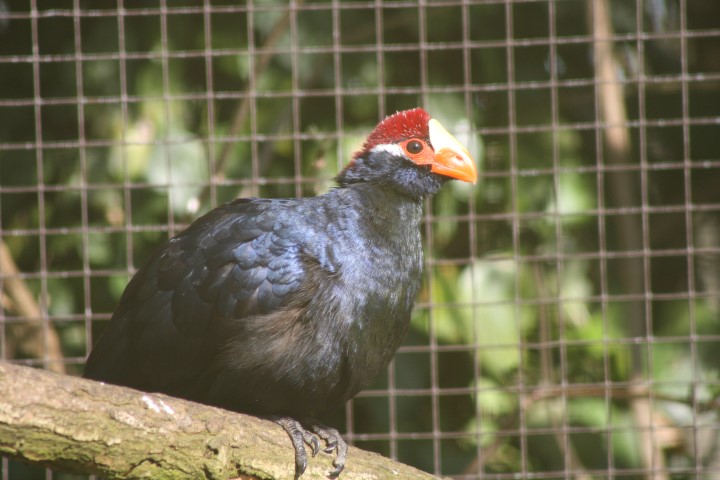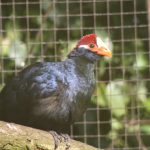28th of November 2014 – Species Spotlight Violaceous Turaco

This week we had yet more new arrivals so I’m going to take the opportunity to spotlight one of them
Violaceous Turaco
Musophaga violacea

Also known as the Violet Turaco or Violet Plantain Eater, they are one of 24 different species of Turaco. They are unusual in the family in that they are one of only 2 species that are purple/blue (the other being the Lady Ross, which we used to keep). Numbers are common locally and the birds are not believed to be threatened, although numbers have dropped due to illegal capture.
As with all Turacos, they are an African species, found in tropical West Africa, where they frequent areas of tropical forest. They frequent the tree tops, feeding on mainly fruit as they move through the forest, often jumping from tree to tree as they are not the strongest of flyers. They are nervous birds, often hiding away if threatened. They also take leaves, buds and invertebrates in the diet
The body is generally a violaceous blue/black shade, hence the name. The primary feathers are red, common in turacos from the copper pigment turacine. They also have a red crested and white stripe on the head. The bill is orange and fades into a yellow shield at the top of the bill. Sexes look alike.
Pairs are territorial and both adults will defend their patch if needed. A flimsy twig nest is built roughly 6 metres off the ground with 2 greyish/white eggs laid. Incubation is carried out by both parents for roughly 24 to 26 days. The chicks are fed by regurgitation and will start to become active at 2-3 weeks, clambering on to branches. They can fly from 5 to 6 weeks of age.
We have held separate females for a couple of years now, one in the aviary by the penguins (along with Avocets & the Stone Curlew) and the other in the old Toucan House with Roul Roul Partridge, Luzon Bleeding Heart Dove & Orange Headed Thrush. Turacos can be quite temperamental and often squabble, hence the separation.
A new male joined us over the weekend all the way from Zlin in the Czech Republic, where he hatched earlier this year. He will be kept off show until it gets a bit warmer and then it will be a softly softly introduction to whichever female we decide is best suited. This introduction will either be in a neutral aviary or with the female wired into her shed whilst the male gets used to the aviary. Ideally we will see them feeding each other through the wire!
Also arriving from Zlin were 4 new Humboldt Penguins. The 3 males and 1 female are not related to Karel & Poborsky who arrived from the same collection earlier this year. All 4 are this years chicks so still have their juvenile feathers. They will remain off show for another couple of weeks before they are moved into the main enclosure
The final new arrival was a female Azure Wing Magpie, also from the Czech Republic but from Zoo Ostrava. She is another bird to have hatched this year and will join our group of 20 strong and provide some new blood.
Tree work continues in the Marabou Stork paddock so he remains in a temporary pen along the crane/stork/rhea canal
This week I attended the BIAZA Bird Working Group where I did a talk on our success this year with the Kings. This is an annual meeting and a good chance to network with other zoos, find out whats available and hear all the latest
Wildlife wise it is now dark enough in the mornings to hear Tawny Owl calling away, at least 2 are present. A water shrew has been seen near the keepers kitchen. Most exciting was finding my first Water Boatman for many a year. These water insects were a common sight in ponds in my youth (!) but this guy was found in a puddle on the sand tables!
Thanks for reading


